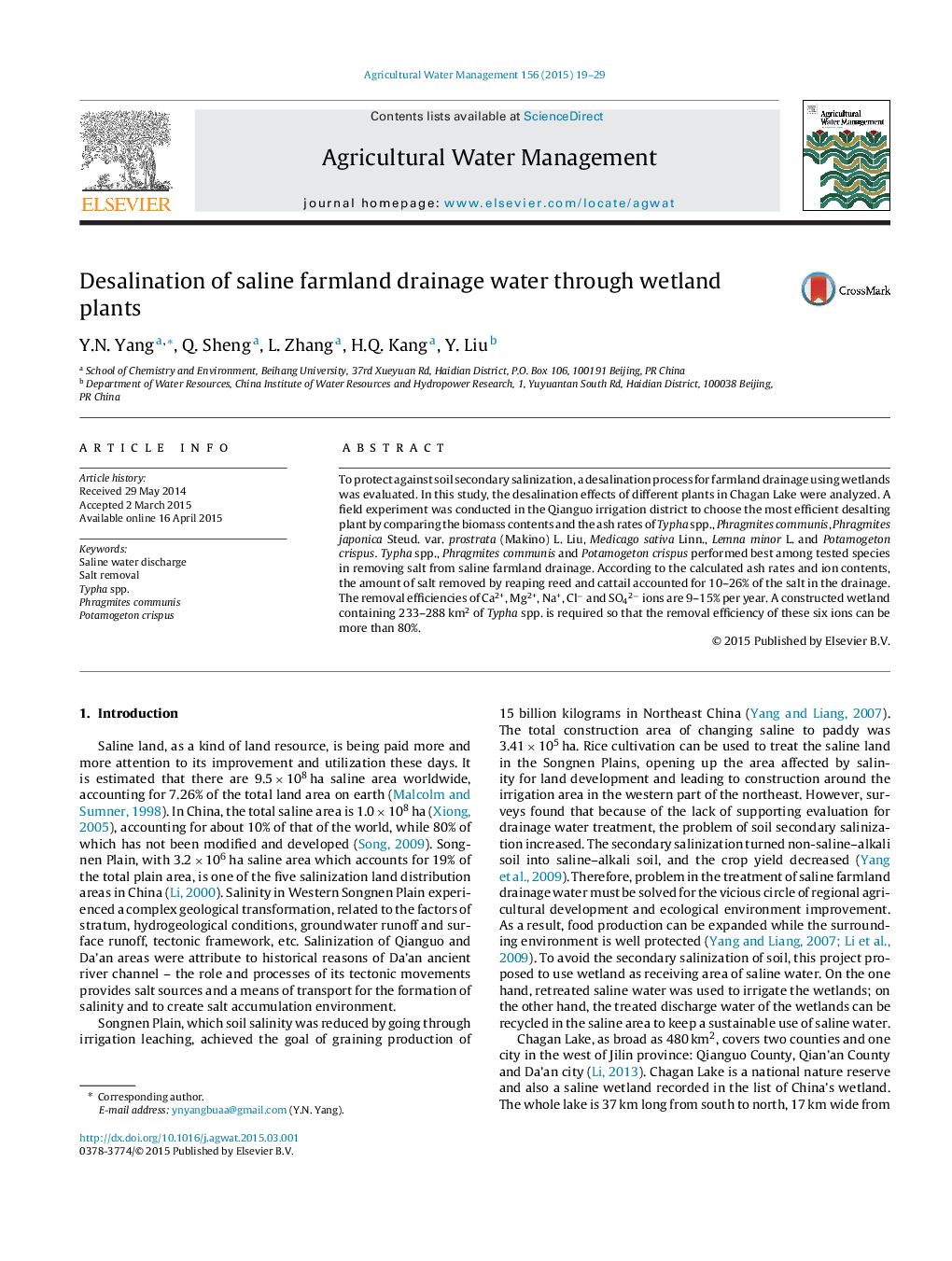| Article ID | Journal | Published Year | Pages | File Type |
|---|---|---|---|---|
| 4478469 | Agricultural Water Management | 2015 | 11 Pages |
•Haloduric plants can remove salt from saline farmland drainage water.•Typha spp., Phragmites communis and Potamogeton crispus were best in removing salt.•10–26% of the total salt in the wetland was removed by harvesting haloduric plants.•The saline farmland drainage providing water to the wetland is a beneficial effect.•The adverse effects of salinity of saline farmland drainage need to be discussed.
To protect against soil secondary salinization, a desalination process for farmland drainage using wetlands was evaluated. In this study, the desalination effects of different plants in Chagan Lake were analyzed. A field experiment was conducted in the Qianguo irrigation district to choose the most efficient desalting plant by comparing the biomass contents and the ash rates of Typha spp., Phragmites communis, Phragmites japonica Steud. var. prostrata (Makino) L. Liu, Medicago sativa Linn., Lemna minor L. and Potamogeton crispus. Typha spp., Phragmites communis and Potamogeton crispus performed best among tested species in removing salt from saline farmland drainage. According to the calculated ash rates and ion contents, the amount of salt removed by reaping reed and cattail accounted for 10–26% of the salt in the drainage. The removal efficiencies of Ca2+, Mg2+, Na+, Cl− and SO42− ions are 9–15% per year. A constructed wetland containing 233–288 km2 of Typha spp. is required so that the removal efficiency of these six ions can be more than 80%.
